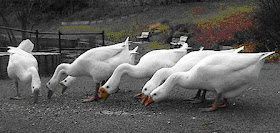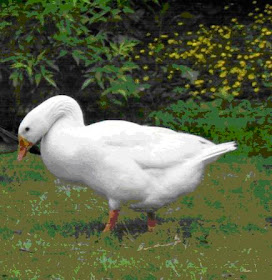 The Story of the Girl begins with the posting on January 8th. My true account spans a four-year period from 2001-2005. This is the third and final chapter.
The Story of the Girl begins with the posting on January 8th. My true account spans a four-year period from 2001-2005. This is the third and final chapter. The Story of the Girl
Chapter Three continued
A small flock of Canada Geese finally returned in July, but the Girl was not with them. Still, I refused to lose hope. Though I sometimes left the dam with a sick feeling in the pit of my stomach, I told myself: not yet. I would wait until August.
August came and went and still the Girl had not returned and likely never would. I finally faced the truth: more than 80 inches of snow had fallen that historic winter and my worst fear had come to pass.
The Girl had perished.
I imagined several scenarios, but one seemed more probable than all the others: unable to fly long enough with the flock to find refuge along the coast, the Girl had found herself grounded for weeks at a time, forced to survive amid mountains of snow. Had she died alone or did the wild goose I thought might be her mate perish with her? Did she succumb to starvation, hypothermia or coyotes? I would never know. And yet, I knew.
...to be continued
















